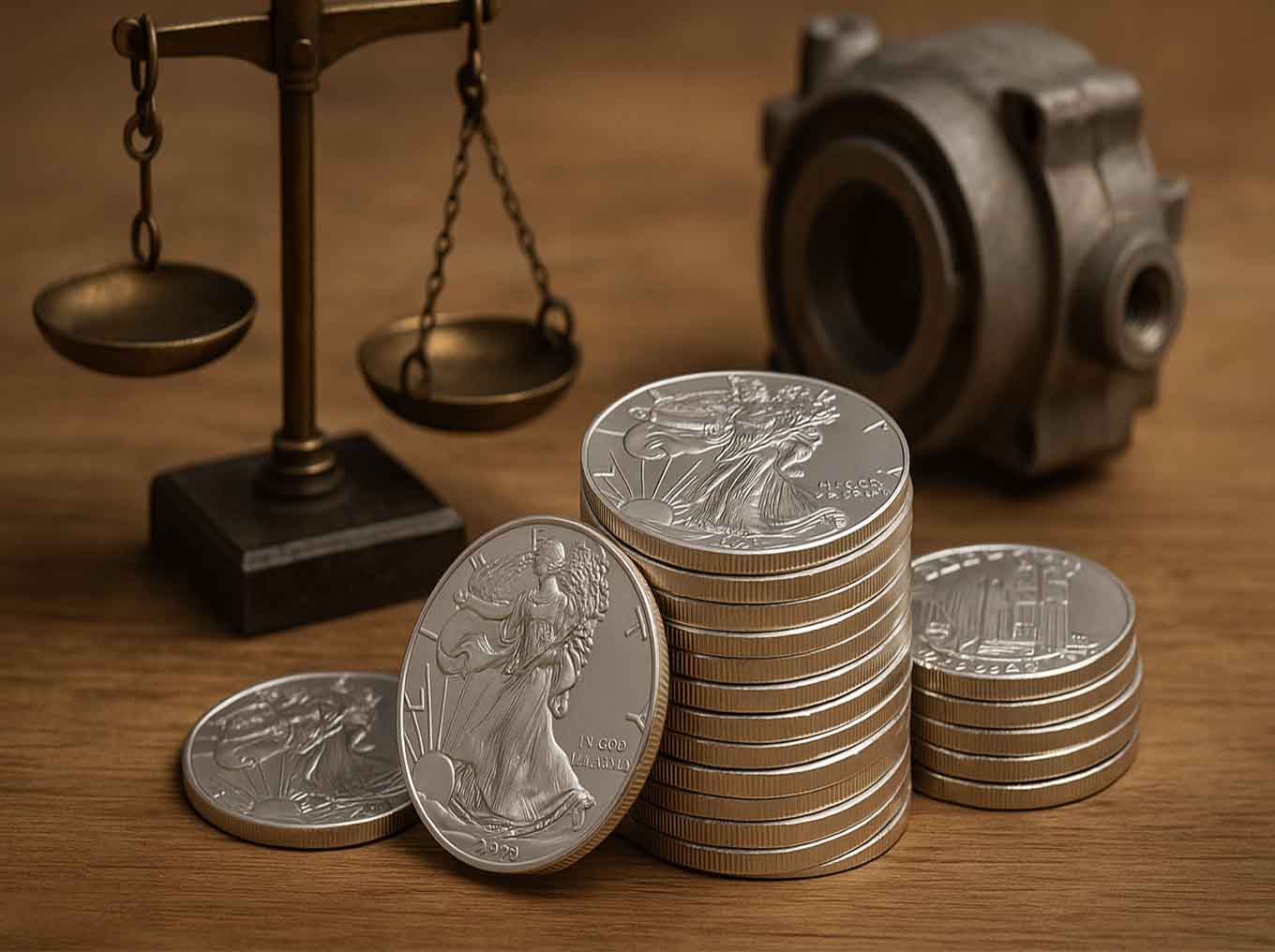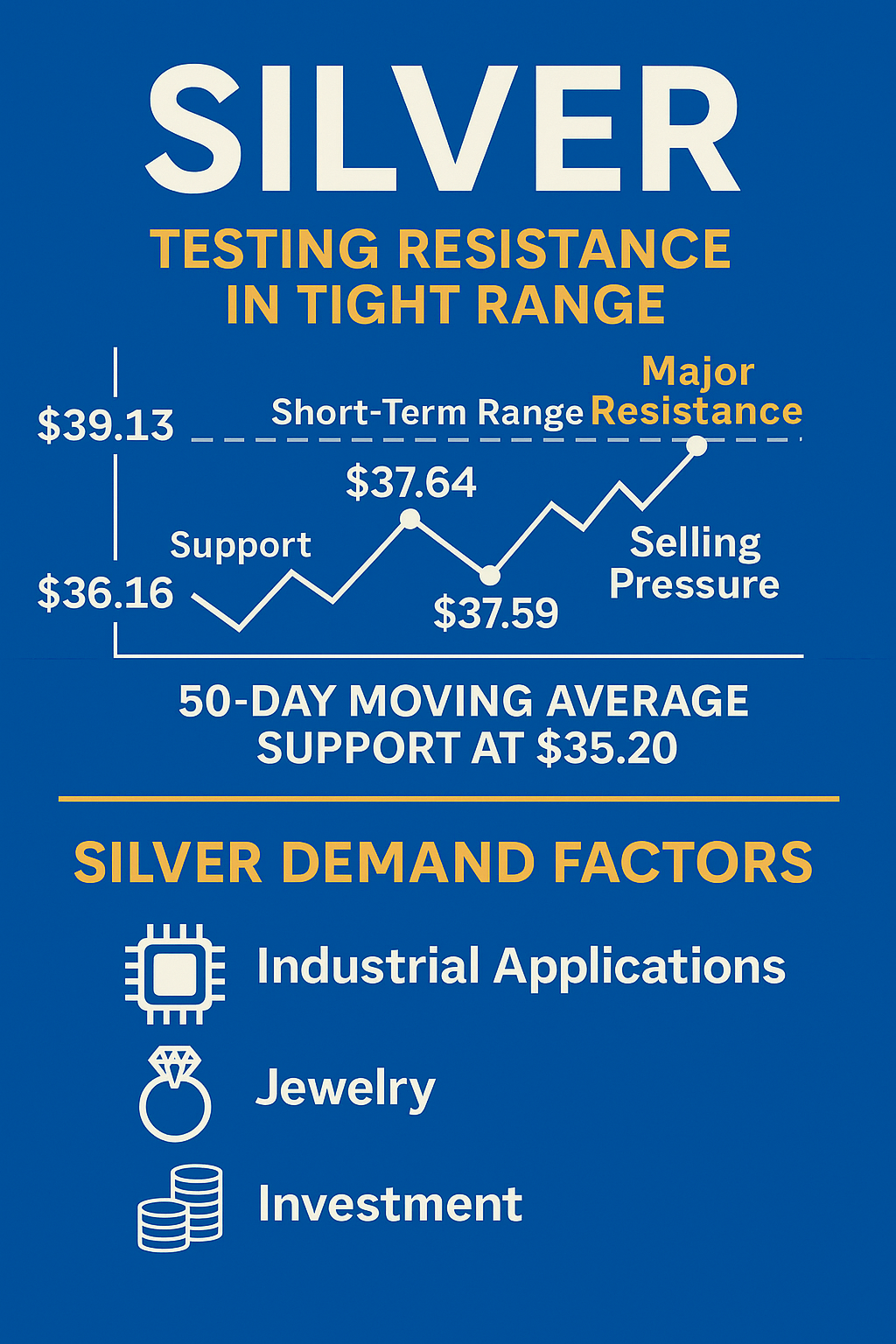
Silver’s Second Shot: Will the Ancient Metal Finally Break Its 1980 $50 High?
Silver is surging toward $38 an ounce, but still hasn’t broken its 1980 high of $50. From ancient currency to clean energy metal, we explore silver’s historic role, industrial comeback, and what may lie ahead.
Silver is flirting with $38 an ounce. That’s the highest it’s been since 2012, a powerful surge for a metal that’s often overlooked, overshadowed by its flashier cousin, gold.
But here’s the catch: even at $38, silver is still below the all-time high it hit more than 40 years ago, $50 an ounce, back in 1980. Gold, Bitcoin and almost every other base and precious metal has new all-time highs, from copper to lithium, nickel and tin - it seems only silver has not joined the ATH club.
So, what gives?
Why hasn’t silver soared past that level despite inflation, industrial demand, and a growing retail investor base?
To understand where silver might go, we need to climb into the financial time machine - and go all the way back to when silver wasn’t just a commodity. It was money.
A Metal with Memory: When Silver Ruled the World
For most of human history, silver was synonymous with currency.
Ancient Greeks minted silver drachmas. Romans paid soldiers in silver denarii. Chinese dynasties measured wealth in silver taels. And long before the U.S. dollar reigned supreme, the world ran on silver-backed trade.
Even the word “salary” comes from salarium, Roman soldiers’ allowance for buying salt, often paid in silver.
For millennia, silver was trusted. Tangible. Beautiful. Universal. And crucially, limited.
But that all changed in the late 19th century. The discovery of massive silver deposits in the Americas, combined with the rise of central banking and fiat currencies, demoted silver from monetary throne to industrial workhorse.
Still, the metal never stopped working, but it just found a new purpose.
The Industrial Era: Silver Goes to Work
Today, silver is the most conductive metal on Earth. It’s essential for:
- Solar panels
- Electric vehicles
- Semiconductors and 5G networks
- Medical devices and antimicrobial coatings
In fact, nearly 50% of global silver demand now comes from industrial applications.
And that number is expected to grow rapidly in the coming years. Did you know that the global silver market has been in a supply deficit since 2021?
As the green energy revolution accelerates, silver demand is projected to outpace supply. The Silver Institute predicts industrial silver demand will hit a record 690 million ounces in 2024, driven by solar energy and EVs alone.
Silver is no longer just a relic of the past. It’s a lifeline to the future.

The Hunt for $50: Why That Price Still Haunts Silver Bulls
What many don't understand is that the silver price was artificially inflated in the late-1970s and into 1980.
In the late 1970s, two wealthy Texas oil heirs - Nelson Bunker Hunt and William Herbert Hunt - orchestrated one of the most audacious commodity plays in modern financial history: they attempted to corner the global silver market.
At the time, the brothers were deeply concerned about inflation, the weakening U.S. dollar, and what they viewed as the fragility of fiat currency. Sound familiar?
Convinced that silver was real money, and grossly undervalued, they began aggressively buying up physical silver and silver futures. By early 1980, they and their associates had accumulated control of an estimated 100 million ounces of silver, and their sheer scale of buying helped drive the price of silver from around $6 an ounce in early 1979 to nearly $50 by January 1980. Metals don't move like that without help or serious manipulation.
But like all bubbles, it was destined to burst. Concerned by the Hunt brothers' influence over the market, U.S. regulators stepped in. The Commodity Exchange (COMEX) changed margin requirements and restricted leveraged silver trades, moves seen as directly aimed at the Hunts.
As liquidity evaporated, silver prices collapsed virtually overnight. On “Silver Thursday,” March 27, 1980, the market cratered, and the brothers faced margin calls they couldn't meet. The Hunts lost billions, and their empire unraveled. The saga remains one of the most famous examples of a market manipulation attempt, highlighting both the power of concentrated capital and the risks of unchecked speculation.
Now, back to the year 1980. Inflation was raging. Gas lines were long. And silver—thanks to the infamous Hunt brothers’ attempt to corner the market—briefly spiked to $50 per ounce.
That price has remained stubbornly out of reach ever since, even during silver’s 2011 rally when it nearly touched that mark again.
But this time might be different.
““Silver moves much faster than gold when that transition happens.” said Rick Rule, founder of Rule Investment Media.
Others echo the same sentiment.
Keith Neumeyer, CEO of First Majestic Silver, recently said:
“What’s in store for silver in the future? Keith Neumeyer of First Majestic Silver has said he sees the white metal reaching US $100 per ounce.”
These are not predictions. They’re perspectives. But they highlight one thing: silver has moved into the forefront of investors minds.
Why Retail Investors Are Watching Silver Again
For years, silver was treated like the dusty cousin in the family of precious metals, attractive but unpredictable. Now, it’s having a moment.
- Inflation is sticky
- Interest rates are volatile
- The global energy transition is accelerating
- And geopolitical tensions are fueling demand for tangible assets
Meanwhile, silver ETFs are seeing renewed inflows. According to a Mining.com article titled Silver ETF inflows at record pace in 2025 amid surging prices — report:
"During the first half of 2025, silver-backed ETPs saw net inflows totalling 95 million oz., taking the total global holdings to 1.13 billion oz. — only 7% below the peak level of 1.21 billion oz. in February 2021, according data compiled by the Institute."
source: https://www.mining.com/silver-etf-inflows-at-record-pace-in-2025-amid-surging-prices-report/
They are of course, referring to the Silver Institute.
Retail investors aren’t just looking for a hedge; they’re looking for leverage. And silver, with its high beta compared to gold, offers exactly that.
Final Take: The Forgotten Metal May Become the Future Metal
At $38 per ounce, silver is showing strength. But its historical ceiling of $50 still looms like a ghost.
Will it break through this time? No one can say for sure.
What we can say is this: silver is more sought after today than ever. Amazingly, according to the Silver Institute, silver has seen demand outpace supply since 2021.
It’s an ancient metal with a modern mission: anchored in history, but wired for the future. And in a world reordering itself by the week, silver might find itself closer to the center of the next great financial narrative.
Latest Insights
Recent Highlights from Our YouTube Channel
Comprehensive reviews of current market dynamics and the latest trends influencing the future of investments.
